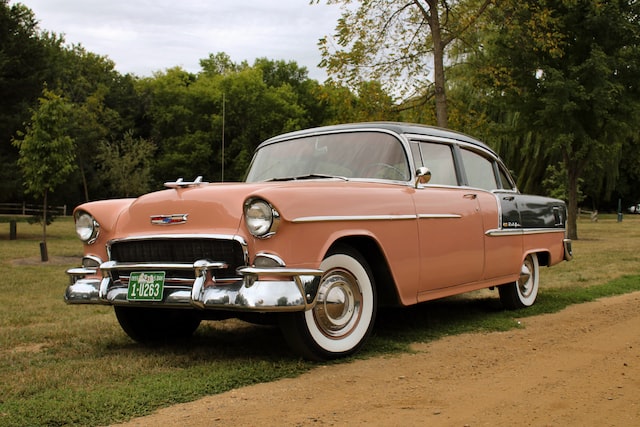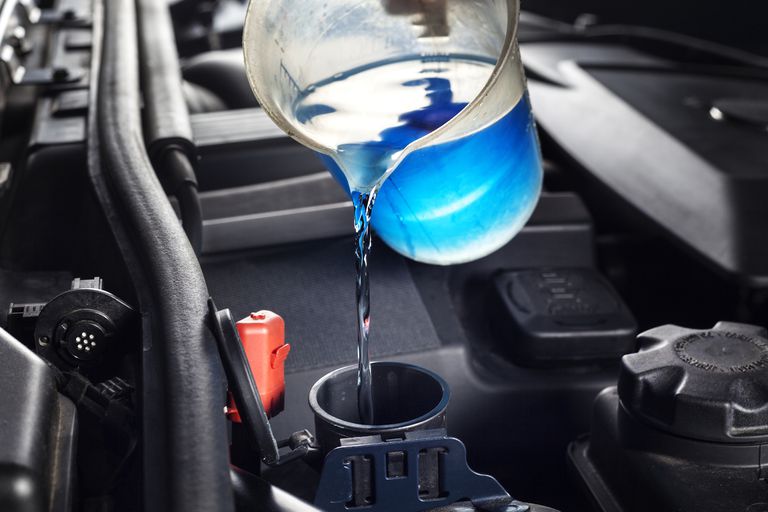Antifreeze is an important component in keeping your engine cool and preventing overheating. Regularly checking your coolant and adding extra antifreeze as needed is an excellent method to catch issues early. So, how to put antifreeze in car? We examined this issue thoroughly to give an in-depth solution to assist you in properly applying the correct antifreeze to your automobile.
What is Antifreeze?
Antifreeze, often known as engine coolant, is a colored liquid that is blended with water to assist your engine to stay cool in hot weather. Coolant is pumped throughout the engine block as the temperature outside varies from hot to cold to maintain an even operating temperature. Antifreeze, on the other hand, does more than merely keep things cool. Maintaining adequate fluid levels also assists in corrosion prevention.
How does Antifreeze work?
Antifreeze is mixed with water and placed into the right reservoir in your engine, normally in a 50/50 ratio. Ethylene glycol is used as a base to make a liquid that is pushed into your car’s engine to adjust and maintain an appropriate operating temperature during very hot or cold weather.

How to put antifreeze in the car?
Before you start
- Check your owner’s manual for the suitable engine coolant for your car; different engine types require different coolants
- Find or purchase a gallon of the proper coolant
- Keep your arms away from the cooling fan by rolling up or removing loose clothing (s). Even when the engine is turned off, fans might switch on automatically
- When the engine is running or still hot, never remove the coolant reservoir cap. Allow time for it to cool
- Because the reservoir cap is under pressure, cover it with a towel or a thick cloth before removing it.
Putting antifreeze in the car, like replacing windshield wiper fluid, adding engine oil, and inflating your tires, is a basic maintenance task that most drivers can handle. So, how to put coolant in the car? Here are 6 steps putting antifreeze in the car you can do:
- Step 1: Turn Off The Engine And Let The Car Cool
Before adding antifreeze, always switch off your car and let the engine cool down. Make sure your parking brake is engaged and your vehicle is parked on a level surface. There are a few reasons why you should let your vehicle cool down before applying antifreeze. First, engines become quite hot, and you don’t want to risk being burned by touching the wrong part. The reservoir cover will also be warm to the touch.
So, what should you do if your engine overheats and breaks down? You might be tempted to add antifreeze before the engine cools down in this case. As a general rule, wait at least 15 minutes for the engine to cool down before opening the cap. If you do not wait, you risk causing engine harm. Engine cracks might occur as a result of the sudden temperature change. If you add coolant when the engine is hot because you’re in a hurry, you risk incurring expensive engine repair or replacement costs.
- Step 2: Locate The Engine Coolant Reservoir
Because it normally has a colored cap, it’s easy to find the coolant reservoir. However, many people have difficulty finding it. Don’t worry if you can’t find yours; you’re not alone.
The reservoir lid on a lot of cars is yellow. Many cars feature a warning sign on the cap, indicating that it should not be opened while the engine is still hot or running. The reservoir is generally made of thick, transparent plastic that allows the owner to see the coolant while it is being added.
What happens if I can’t find the reservoir? Consult your owner’s handbook for further information. The handbook shows several parts under the hood of your vehicle. If you can’t find your owner’s handbook, there are many internet resources that provide information about your vehicle.
- Step 3: Check the Levels of Coolant
A quick glance at your coolant reservoir is all it takes to check the coolant levels. Check the coolant level against the maximum and minimum demarcation lines once you’ve found the reservoir.
This is why the reservoir is clear, and the antifreeze liquids are brightly colored, allowing you to easily examine the coolant levels in the reservoir. To check the liquid level from the reservoir’s sides, you don’t need to remove the cap.
If the coolant level is below the top line, a little amount of coolant must be added to bring it up to that level. If it’s less than the minimum, you’ll need to add some coolant to the maximum mark. After that, you should check the level every day or two.
It might be a sign of a leak if you have to top up a coolant after a day or two. A break or hole in the cooling reservoir can lead to serious problems. If you detect a leak in your cooling system, see your mechanic.
- Step 4: Ensure that the coolant cap is properly twisted off
You should carefully unscrew the cap and replace it. A faulty cap can have a significant impact on the efficiency of your cooling system. Remove it with caution; you don’t want to harm it.
- Step 5: Add the antifreeze
This is the moment you’ve been looking forward to! You can reduce concentrated coolants with water, but please read the directions carefully. Coolants marked “ready to use” should not be mixed with water. When putting coolant in a car to your car’s reservoir, use a funnel to prevent spillage.
- Step 6: Put The Cap Back On When You’ve Reached The Cold Fill Line
It’s time to replace the cap once you’ve reached the maximum or cold fill line. Make sure it’s securely fastened. If not, the pressured system may cause a serious leak. That concludes the discussion.
If you suspect a leak in your system, make sure you check it on a frequent basis to make sure it isn’t becoming low. Because coolant is regularly reused, you shouldn’t run out very often.
Both humans and animals are at risk from antifreeze. Some antifreeze products have a sweet taste, making them considerably more harmful to pets and wild animals. It must be disposed of correctly. If your house is connected to a municipal wastewater system or sewer, antifreeze poured down a sink or flushed will most likely be processed by the treatment facility. To be sure, contact your local water department. If this is not the case in your house, you might seek disposal advice from your city hall or a nearby auto parts store. Make sure to properly dispose of any rags, buckets, or funnels that you utilize throughout the project.
Read more >> Tire Rotation And Balance: Which One Do You Need?
Frequently Asked Questions
Where do I put antifreeze in my car?
On the lid of the coolant reservoir are warning stickers. If it is not immediately clear, your vehicle’s manual will show you where it is. The reservoir should be clear enough for you to see how much coolant is within. Obviously, you do not need to open it if there is enough (up to the ‘full’ line).
If more antifreeze is needed, remove the coolant cap and pour it into the maximum mark. Before you do this, make sure the engine is completely cold, ideally several hours after the last time it was used.
How often should I replace the coolant in my car?
To be effective, most fluids in your car need to be drained and changed at regular periods. It’s the same with your coolant. Check your coolant levels at least twice a year, before the summer heat and before the winter cold. For more specific information on when to flush and replace your vehicle’s coolant, consult your owner’s handbook.
What Happens If I Fill Up My Car With Too Much Antifreeze?
A particular amount of coolant is held in the reservoir. It will be discharged via a hose if you add too much over the maximum threshold. After filling the reservoir, you may observe liquid under your automobile. In the worst-case situation, an overflowing tank might cause electrical damage if it comes into touch with the engine’s wiring. As a result, you must be cautious not to exceed the maximum limit.
Why is my coolant level low although there are no leaks?
If you need to top off your coolant after a few days, the first thing you should look for is a leak. But what if there isn’t a leak at all? What may the issue be? A sudden change in driving styles, a badly maintained coolant system, or damaged engine components are all possible causes for your coolant to disappear quickly.
A fractured cylinder head, a manifold leak, shattered cylinder bores, or a blown head gasket are some of the problematic parts in your system that might cause coolant loss. All of these issues may be resolved by your local mechanic.
Is It Safe To Replace Coolant Without Draining The Old One?
It’s not an issue to just top up the coolant. There’s no need to clean out the old coolant before replacing it. The older coolant, on the other hand, gets acidic with time. Corrosion and, as a result, cooling system problems might occur. The coolant should be replaced every 30,000 miles, according to most manufacturers.
Should I keep my coolant reservoir full at all times?
The reservoir does not have to be full all of the time. However, it is preferable to keep it at least half-full at all times. When the engine is turned off, it is advised that you keep it at least 30% full. This will maintain your engine in top shape and prevent any harm caused by a lack of coolant.
Vehicle engines are complex systems with several moving parts. Engines undertake a variety of tasks, which causes the engine to overheat, necessitating the usage of antifreeze. You now know how to put antifreeze in a car to your coolant reservoir and monitor the coolant levels to prevent the engine from overheating and maintain it correctly.
On this website, we provide thousands of free DMV practice test questions to help you easily memorize the essential knowledge to be safe while driving. Otherwise, you can download it for your IOS or Android devices to study offline anytime and anywhere!

UT Utah License Renewal: A 2025 Comprehensive Guide
Discover the ultimate guide to Utah license renewal! This comprehensive guide delves into the intricacies of renewing your driver's license in Utah,...
February 13, 2023

South Carolina S.C. Driver's License Renewal
The South Carolina S.C. driver's license renewal process is designed to be comprehensive, taking into consideration eligibility requirements, renewal methods,...
February 13, 2023

Pennsylvania PA DMV License Renewal: A 2025 Full Guide
The Pennsylvania PA DMV license renewal process is designed to be comprehensive, taking into consideration eligibility requirements, renewal methods,...
February 10, 2023

